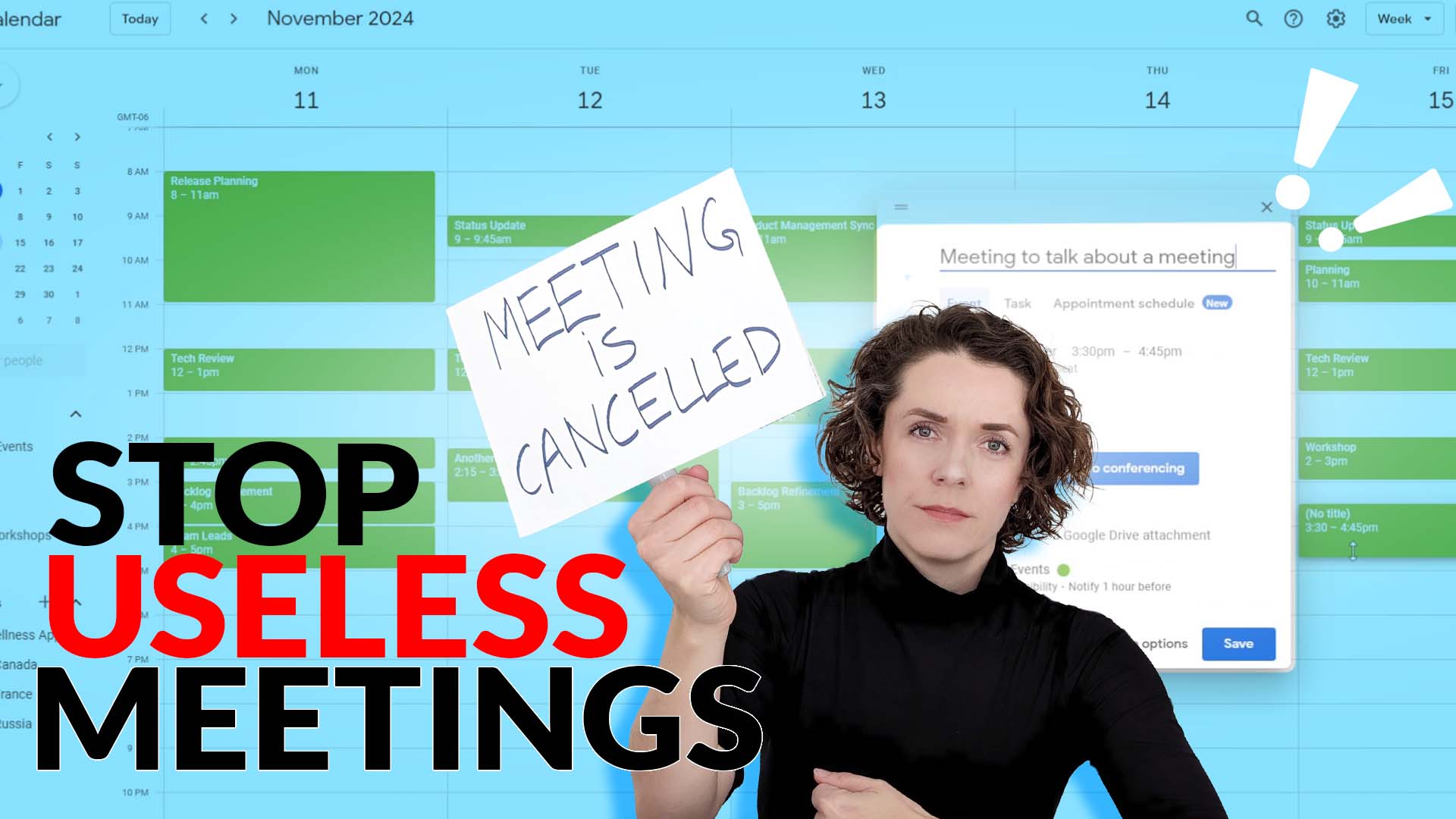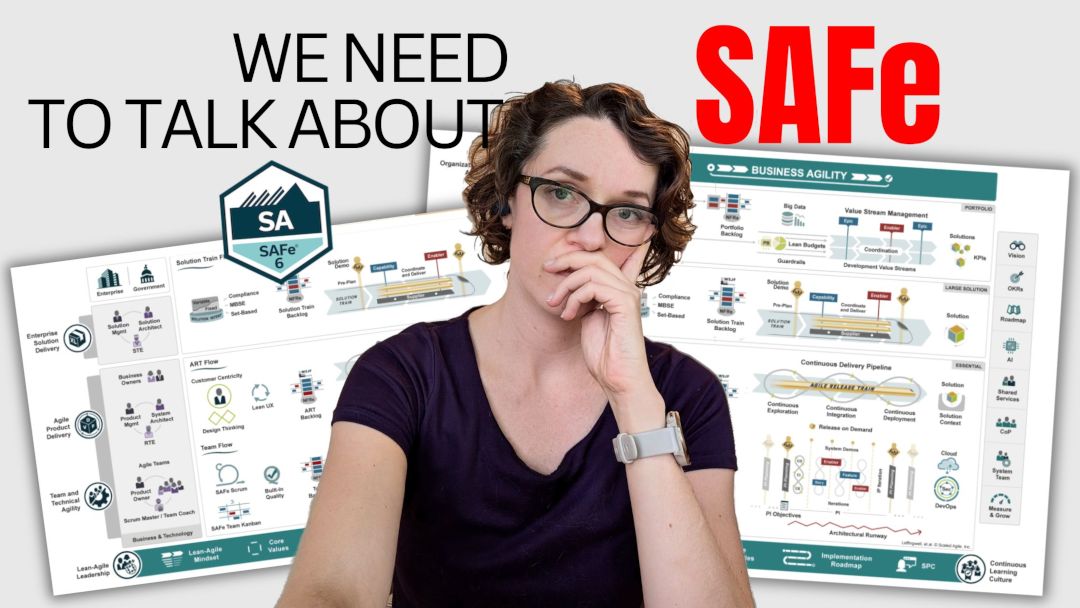A student once asked me if I have any suggestions for coordinating a distributed team that has a 12 hour difference between them.
I told her that I don’t have a magic wand, unfortunately.
If your team members are spread across the whole world, it IS the reason they are struggling to deliver anything.
While I don’t have a magic wand, I have some recommendations and tips to help you manage this situation.
Watch this video to find out what you can do or keep reading!
But if you want to participate in the GIVEAWAY, you definitely should watch 😉
Distributed Teams Realities
Today I want to talk about distributed teams and how to coordinate them.
It’s been a while that teams started working remotely even before the pandemic.
With easier communication tools it seemed that it makes sense to go look for talent outside of your country, region, or city.
I worked several times with teams that were located overseas.
And to be honest, it was an absolute pain in the ***** 🙊
Many teams are struggling to coordinate when there is even a small time difference, like a couple of hours.
But when you have multiple people in different time zones or people with a 12 hour difference, it becomes impossible to manage it effectively.
The best solution to your time zone problem
….the BEST solution to the time zone difference problem….
… Don’t create teams that have such a huge time difference and instead combine people into teams based on their location.
This is what I believe you should focus on first, before you go into other ways to manage the situation that I AM going to share later in the video.
But first, let’s talk about this particular solution: creating teams based on location.
There are multiple criteria we need to consider when we create teams, like team members’ skills, their relationships with each other, level of seniority, etc.
I think that time zone needs to be another criteria for building great teams.
It doesn’t mean that the whole team must be co-located – with modern communication tools, I don’t think it’s really necessary.
But they need to have at least 5 or 6 hours of the work day aligned. It means that during those 5 to 6 hours the whole team is there and can work in parallel, ask questions to each other to get quick answers, and have productive meetings.
In this case, someone maybe starting a couple of hours ahead of everyone, and someone will work a couple of hours later than everyone.
It’s not ideal, but it’s manageable with extensive communication.
This doesn’t mean that people can only have up to two hours time difference, rather, their working hours are aligned with each other.
For example, I might need to start my day a bit earlier than I would usually do because it allows me to have more hours aligned with my colleagues who are 3 or 4 hours ahead of me.
Team building activities for remote teams
Ok, with this most promising solution out of the way, let me give you some other tips on how to make your life easier when your team is spread around the whole world.
Number 1: Working agreements
I refer this a lot in my videos, and I think it only highlights how important it is in so many different situations.
When your team is so spread out, you want to make sure that the are 100% aligned on how they communicate.
It has to be crystal clear what tools they use and how. And the more details you discuss and document, the better.
That’s the only way to reduce the confusion and complexity here.
Here are some questions that you would want to ask:
- What communication tools will we use for what situations?
- For example, we’ll use Slack for quick questions; we’ll use a specific folder in our Microsoft account to share all the documents; we’ll use emails for when we need to include people from other teams in the discussion; we’ll use a shared calendar to show when each of us is available.
- What do we expect from each other using those tools?
- For example, set your availability to “Available” once you start working, and to “Away” when you finished working.
- Or, if you receive a message in Slack, reply within an hour.
- Who works at what hours? What are our must-be-available hours?
- For example, all important meetings must be scheduled in the timeframe between 10 am EST and 3pm EST.
- What other things we need to consider?
- For example, Wednesdays afternoon is a “No disturb” time when everyone is focusing on their work, so messages in Slack can be ignored. No quick responses expected.
- Or, if you are running late, have an emergency you need to leave for, or are taking a day off, message to the whole team in Slack as soon as possible.
I know that these items might seem like something straightforward and, of course, everybody will do this because it’s juts common sense.
But let me tell you, people have very different expectations around communication. Much more different than what you believe.
For example, 80% of the time when I start working with a new team, when someone needs to leave or take a day off they would message to me directly and not including anyone in the team.
So I would have to literally encourage them to send these messages to the whole team as the whole team needs to know, not just me.
Or another example, people feeling pressured to reply to every email coming to them during the day within like 10 minutes, which negatively affects their ability to focus and do work.
There is somehow and expectation that you have to reply to the emails immediately.
With many of my teams we had to set up boundaries around this giving a more reasonable timeframe to reply.
I even had to enforce disabling email notifications and closing their email client because team members had difficulty staying focused.
Team agreements are extremely important, even more so when your team works across multiple time zones.
If you need help with running a team agreements workshop, I have a facilitation guide in my store.
Number 2: Communication
As I mentioned a bit earlier, extensive communication is a must if you want to succeed.
What I mean by that is: it’s not about communicating obvious stuff.
Extensive communication is about communicating anything that may have an impact on your team, even if you are not sure they must know it.
That is the only way to create transparency in your team when they are far away from each other.
This might mean that, say, I received a meeting invitation from a manager of an adjacent team asking me to share some information about how our team works.
Seems like no one from the team needs to be involved, and maybe they shouldn’t.
But this information is directly related to the team.
So I would share it with them as an FYI, and maybe someone would decide to join, maybe not. But at least I know that they know.
And when, for example, this same manager approaches them with a question they already have some context around our relationships with the other team.
I would recommend creating a specific place for sharing information like this. Like a separate channel in Slack where no replies are expected.
Here are a few other examples of the information you might want to share:
- Important decisions made in meetings that the team couldn’t attend if that information is not strictly confidential (which most of it isn’t).
- Hiring discussions.
- New projects or products other teams might be working on or that might be coming your way.
- Learning opportunities whether provided by the company or not. Say you are going to a conference, why not ask if anyone else in the team is interested in joining you?
I have this video on Transparency where I share some more examples and additional information on this topic.
Number 3: Team building
Yes, another thing that most likely will seem extremely obvious. Unfortunately, it is often forgotten, or just put aside due to pressure and deadlines.
But if your team is fully distributed, it is an essential part of building rapport between the team members.
It is not necessarily a way to help you coordinate work between team members or manage and track progress, but it’s an essential part of building a team that is actually a team and not just collection of individuals.
Set some time aside for regular, and yes, I said REGULAR team building activities.
Every month, bi-weekly, or even every week.
Find a way to get people together, chat, get to know each other personally.
I have made a video on 5 easy ice breakers you can use in your meetings.
Here I’m talking about actual dedicated time to team building.
Now, don’t just set up a Zoom call and ask people to join and have a chat.
As we know, this usually leads to stale conversations and very awkward silences, especially, if people don’t know each other well yet.
You need to create some structure around the conversations you are having.
The easiest way to do so is to play some online multiplayer games, or party games.
There are so many options you can look into.
And people participating don’t need to have any knowledge about video games to enjoy these team building activities on their PC.
If you are not familiar with the gaming industry, here some examples you can use right away:
- Keep talking and nobody explodes. This one is not only fun, but it also is a great way to help people build good communication between each other.
- The Jackbox Party Pack has a collection of awesome simple games that will help your team just have fun and learn a bit more about each other.
- Among Us. This one is more a game of deception where you need to identify the traitor. It can add an interesting spin on your team building activities.
- Use Your Words is a word game that tests participants creativity and provides plenty of silly and humorous scenarios to explore.
There are lots of other multiplayer titles with more focus on gaming. But if your team is familiar with video games they can be great addition to your collection of team building activities for remote teams.
Summary
And these are my suggestions on how you can create a much better working environment and coordinate a remote team.
Firstly, consider how you can minimize the time zone misalignment.
Maybe there is an opportunity to create sub-teams out of a bigger team, where each sub-team has smaller time difference between team members.
And then organize regular but less frequent sync ups between the sub-teams.
Whether the time zone difference is big or not, you need to create solid working agreements describing in detail what tools the team will use and how, what are the working hours that are aligned between everyone, and how team members prefer to communicate.
Then, create a habit for extensive communication in the team, maybe even dedicate a whole chat channel for the information sharing that doesn’t require responses.
And to help nurture teamwork and collaboration, organize and run team building activities for your remote team.
And what are some of the things you tried to coordinate work between people in different time zones?
Share in the comments below.
5,000 Subscribers Celebration GIVEAWAY 🎉
If you would like to participate in the giveaway to celebrate 5,000 subscribers on my YouTube channel, then there are a few things you need to do.
To enter the giveaway:
- Subscribe to my YouTube channel
- Like and comment on this video on YouTube
- Sign up to my newsletter 👉 here 👈 to increase your chances (sign up even if you are already signed up to the newsletter)
I will announce the winners by the end of August 28th, 2022 📆
🎉 THE PRIZE: One of the Essential Guides from my store.




